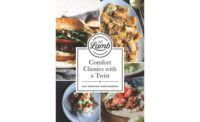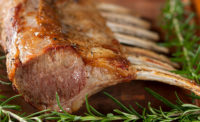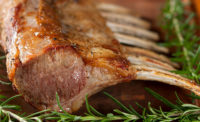The total lamb available in the U.S. is down — both domestic production and imports. Tight supplies and strong demand have resulted in record high lamb prices. To meet demand and ensure domestic lamb maintains and expands market share, the industry has developed a strategy to increase domestic sheep production called, Let’s Grow with twoPLUS.
The three goals of the campaign are:
- Encourage producers to increase the size of their operation by two ewes per operation or by two ewes per 100 by 2014;
- Encourage sheep producers to increase the average birthrate per ewe to two lambs per year; and
- Encourage producers to increase the harvested lamb crop by 2 percent — from 108 percent to 110 percent.
Despite the overall steady decline in sheep and lamb inventories since the mid-1940s, sheep and lamb inventories indicate growth in eastern and mid-Atlantic states and in the Midwest, where alternative and emerging markets are important. Much of the lamb produced in these areas is sold directly from farms to chefs, consumers at farmers markets and to ethnic markets. Many sheep producers are taking proactive approaches to sell their own products directly to customers and foodservice operators, bypassing traditional marketing channels.
Lamb consumption
Throughout the world, lamb is prevalent in the diets, dining rooms and channels of distribution of every region and culture except the United States. Lamb is purchased by a small group of consumers in the U.S. More than one-third of consumers have never tried lamb. The average annual consumption of lamb is less than one pound per year. Nearly 20 percent of U.S. lamb consumption occurs during the spring holidays.
Income plays a huge role in lamb consumption. Consumers with household incomes of $75,000 or more are at least twice as likely to have eaten lamb as those with lower annual household incomes. Urban shoppers are the most likely to consume lamb — the highest consumption of lamb is on the coasts.
U.S. minority populations, which accounted for 35 percent of America’s population in 2008, consumed 58 percent of the lamb available in the U.S. in 2008.
Lamb in retail
Roughly 60 percent of American lamb is sold into retail. Lamb accounts for only 1 percent of the meat case. However, the proportion of meat cases that contain lamb and the variety of cuts being stocked has increased. The highest lamb sales are in the northeast, followed by California and the southeast. The top selling retail cuts are: 1) shoulder; 2) leg; and 3) loin. Ground lamb sales have steadily increased over the past five years.
Lamb in foodservice
Roughly 40% of American lamb is sold into foodservice. The volume of lamb and the variety of cuts sold into foodservice has been increasing during the last five years. More than two-thirds of fine-dining restaurants menu lamb. Rack of lamb is the most commonly featured cut, followed by chops, loin and shanks. (Datassential Menu Trends 2011) When a source for lamb is mentioned on the menu, a domestic lamb source is mentioned more than 2-to-1 as compared to imported lamb.
High-end restaurants have begun buying whole carcasses or quality live animals for custom slaughter from local producers, who are implementing sustainable and humane production practices.





Report Abusive Comment